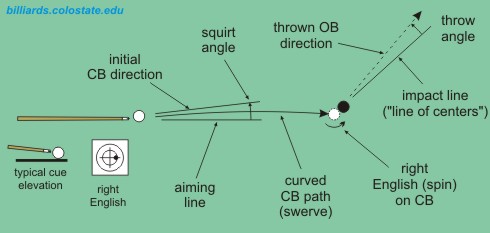Agreed. Inside english reduces the amount of throw at larger cut angles (for the reason DeadStick explained), but it actually increases throw at small cut angles. For more info, see:This is true for thinner cuts, but if it is only a "touch" of inside, it will increase throw for most shots that are fuller than half-ball hits.Inside English reduces cut-induced throw in the same way that hitting harder with no English does: the increased speed at the contact point reduces friction.
"Throw - Part VII: CIT/SIT combo" - BD, February, 2007
The least amount of throw, and the most throw consistency, occurs with fast inside english shots. That's one advantage of inside english shots; although, these good effects require more than just a "touch" of inside. Also, inside English isn't always the appropriate choice for position play. For more info, see:
FYI, throw effects (due to both cut and spin) are explained and demonstrated in this video:
And much more info can be found here:
Regards,
Dave
